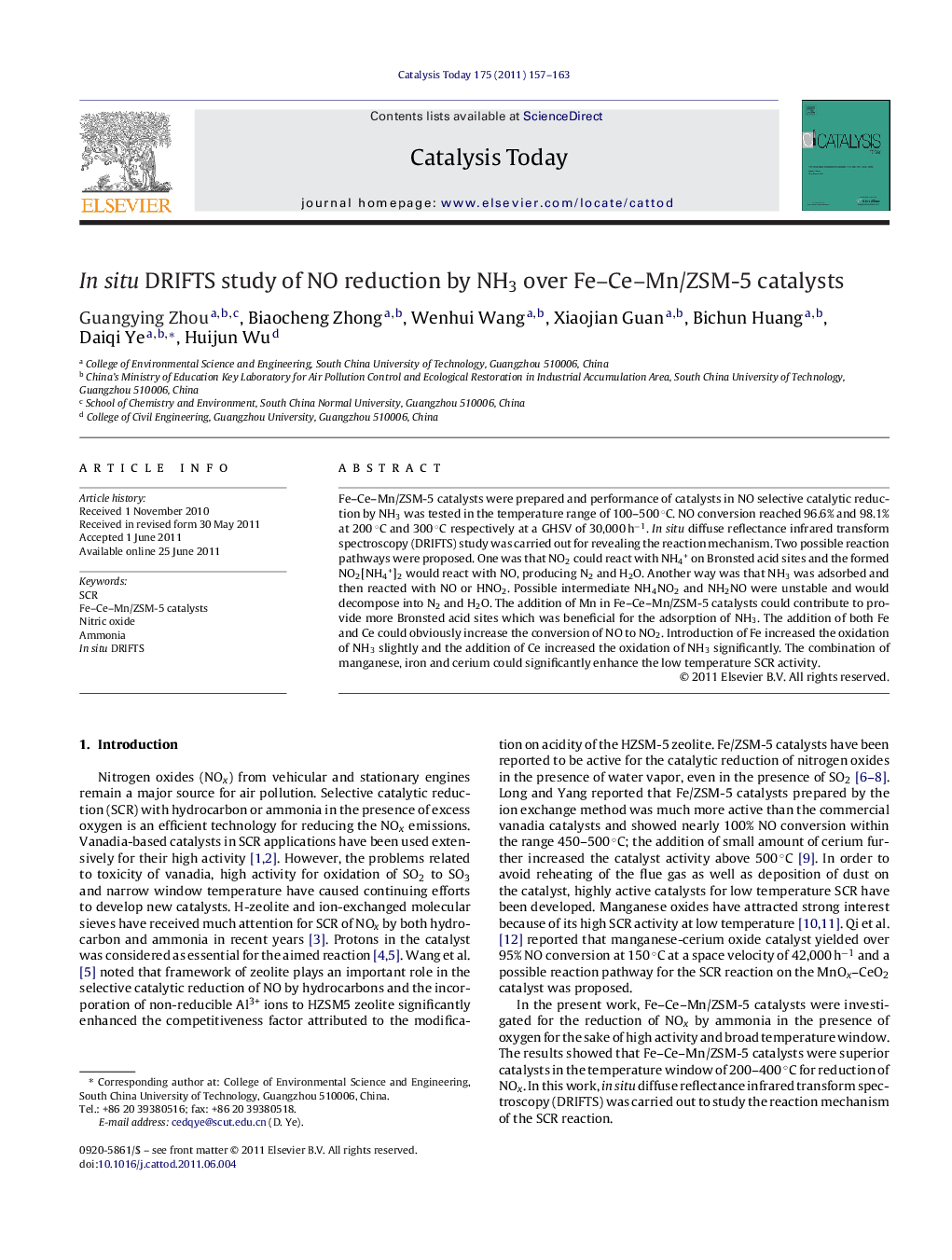| Article ID | Journal | Published Year | Pages | File Type |
|---|---|---|---|---|
| 55735 | Catalysis Today | 2011 | 7 Pages |
Fe–Ce–Mn/ZSM-5 catalysts were prepared and performance of catalysts in NO selective catalytic reduction by NH3 was tested in the temperature range of 100–500 °C. NO conversion reached 96.6% and 98.1% at 200 °C and 300 °C respectively at a GHSV of 30,000 h−1. In situ diffuse reflectance infrared transform spectroscopy (DRIFTS) study was carried out for revealing the reaction mechanism. Two possible reaction pathways were proposed. One was that NO2 could react with NH4+ on Bronsted acid sites and the formed NO2[NH4+]2 would react with NO, producing N2 and H2O. Another way was that NH3 was adsorbed and then reacted with NO or HNO2. Possible intermediate NH4NO2 and NH2NO were unstable and would decompose into N2 and H2O. The addition of Mn in Fe–Ce–Mn/ZSM-5 catalysts could contribute to provide more Bronsted acid sites which was beneficial for the adsorption of NH3. The addition of both Fe and Ce could obviously increase the conversion of NO to NO2. Introduction of Fe increased the oxidation of NH3 slightly and the addition of Ce increased the oxidation of NH3 significantly. The combination of manganese, iron and cerium could significantly enhance the low temperature SCR activity.
Graphical abstractFigure optionsDownload full-size imageDownload high-quality image (360 K)Download as PowerPoint slideHighlights► Over 95% of NO conversion was obtained on Fe–Ce–Mn/ZSM-5 at lower temperature. ► Addition of Mn could contribute to provide more Bronsted acid sites. ► Addition of both Fe and Ce could increase the conversion of NO to NO2. ► Addition of Ce increased the oxidation of NH3 significantly. ► Two possible reaction pathways involved with NO2[NH4+]2 and NH2NO were proposed.
